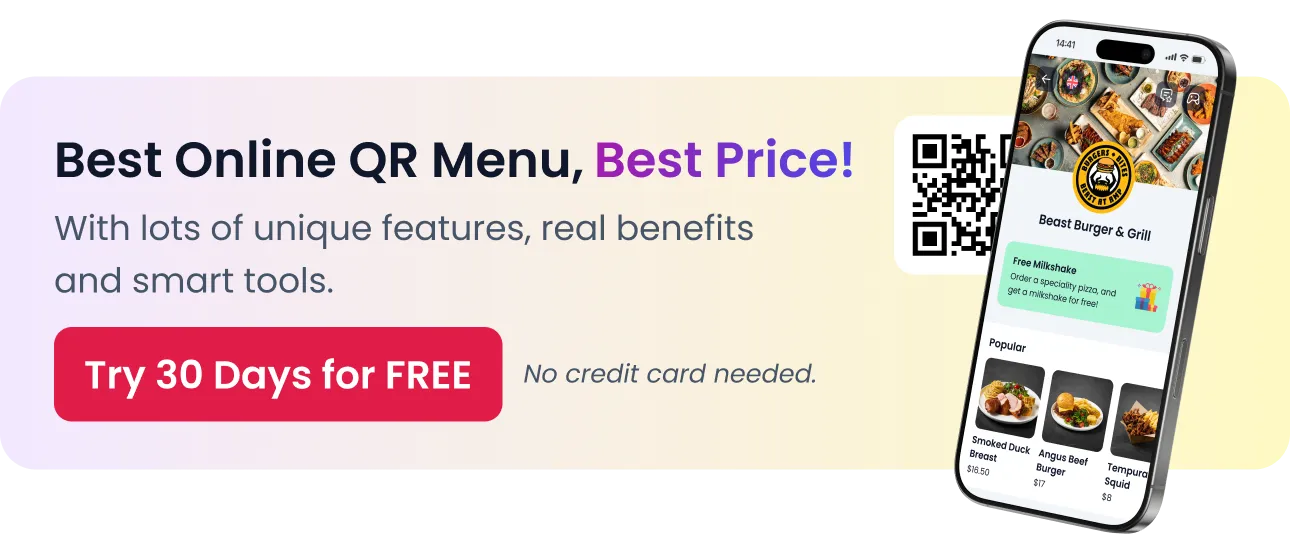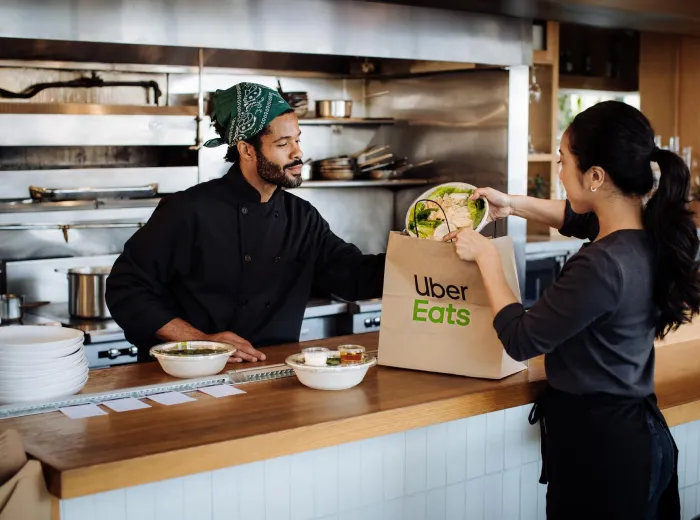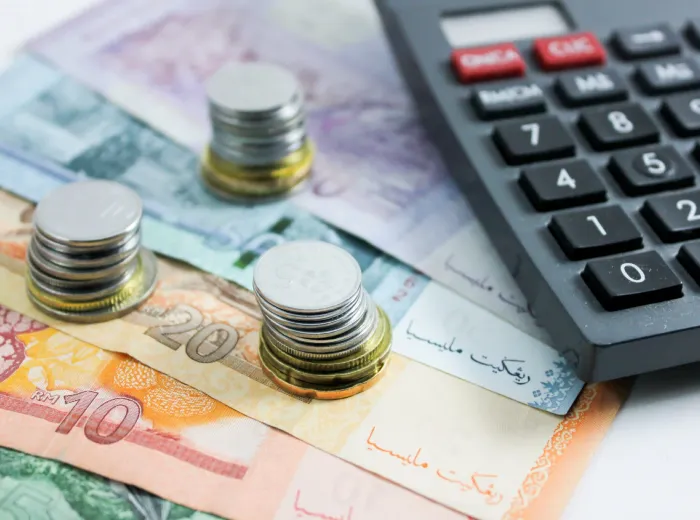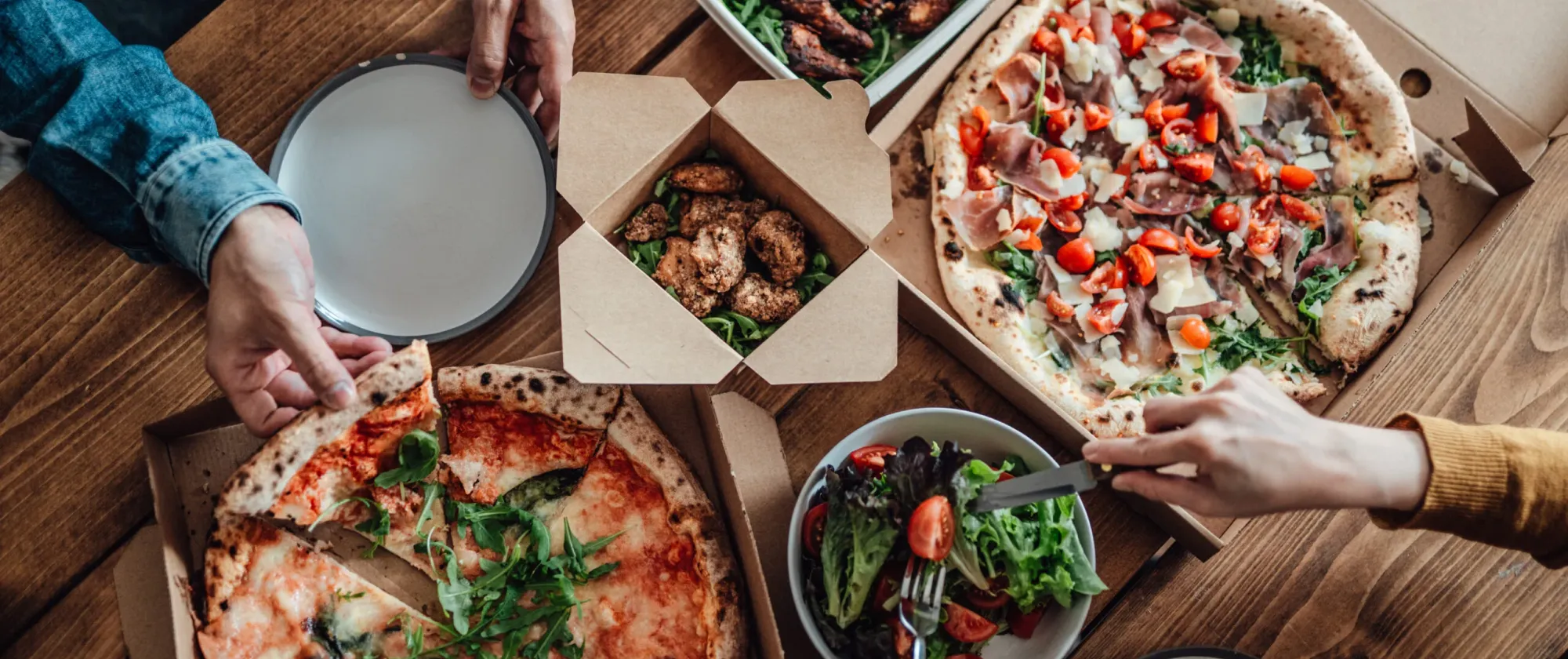
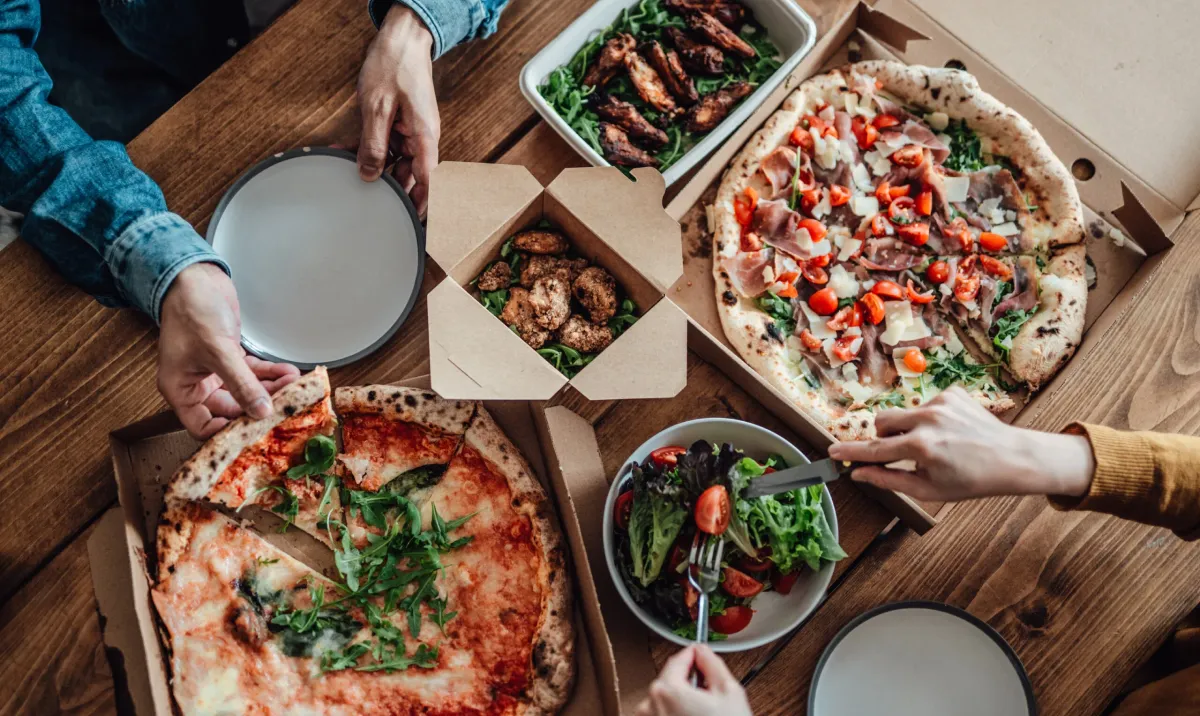
The Pros and Cons of Partnering with Third-Party Food Delivery Apps
In today’s hyper-competitive restaurant landscape, third-party delivery apps like Uber Eats, DoorDash, Deliveroo, and Grubhub have become both a lifeline and a liability. For many restaurant, café, and takeaway owners, partnering with these platforms feels like a fast track to growth — more visibility, more orders, and less hassle managing logistics. But the real picture is far more nuanced.
On one hand, these apps give you immediate access to thousands of local customers without needing to hire your own drivers or build your own tech stack. On the other, they come with steep commissions, limited control over customer experience, and increasing pressure on already-thin margins.
Before jumping in — or continuing — with a delivery platform, it’s critical to evaluate whether it truly fits your business model, financial structure, and long-term goals. In this article, we’ll walk through the real pros and cons based on what I’ve seen with dozens of restaurant owners over the years — from those who flourished with the exposure to others who quietly bled cash until they pulled the plug.
Whether you’re considering your first partnership or looking to improve an existing one, this guide will help you make smarter, more sustainable decisions.
Why So Many Restaurants Turn to Delivery Apps
Delivery platforms have become a major player in the hospitality industry — not just for fast food, but across fine dining, cafés, bakeries, and even local family-owned diners. While some restaurateurs feel pressured to join “because everyone else is on them,” others use these apps as a tool to expand their customer base and grow revenue. Let’s break down the most common reasons restaurant owners decide to partner with third-party delivery apps.
The rise of off-premise dining
Over the past decade — and especially post-pandemic — consumer preferences have shifted dramatically. Many customers now prefer to enjoy restaurant-quality food at home or the office.
Key drivers behind this trend include:
- The convenience of ordering via mobile apps
- Work-from-home lifestyles reducing dine-in visits
- Increased availability of high-quality delivery options
For restaurants, adapting to this shift means meeting customers where they are — and that increasingly means online delivery platforms.
Exposure and reach — the initial appeal
One of the biggest selling points for delivery apps is their built-in user base. Apps like Uber Eats or DoorDash already have thousands (sometimes millions) of users in a given city.
Benefits include:
- Instant listing in a high-traffic app
- Visibility to hungry customers who may not know you exist
- The potential to win new customers without spending heavily on marketing
Many restaurant owners view these platforms as a form of digital real estate — prime visibility on someone else’s corner.
Operational convenience — at a glance
Running an in-house delivery system takes time, staff, and resources. Delivery apps offer a turnkey solution for restaurants that don’t want to manage the logistics themselves.
They typically provide:
- A ready-to-use tech platform for taking and processing orders
- Their own network of delivery drivers
- Customer support for delivery-related issues
For small operations with lean teams, this can be a tempting shortcut to offering delivery without adding overhead or complexity.
These factors — changing consumer habits, broad exposure, and logistical ease — explain why so many restaurants see third-party apps as an attractive option. But as we’ll explore next, these benefits often come with trade-offs that aren’t obvious at first glance.
The Costs You Don’t See Right Away
While delivery platforms promise increased orders and easy logistics, the financial and strategic costs can sneak up quickly — especially for independent restaurants and cafés operating on slim margins. Many operators jump in without fully understanding the real impact on their bottom line, customer relationships, or brand positioning. Let’s dig into the hidden costs that often get overlooked.
Commissions, fees, and hidden costs
Third-party platforms typically charge high commissions — often between 15% and 35% per order, depending on your location, service level, and contract terms.
Common charges include:
- Commission fee (the biggest cost): A percentage of every order
- Marketing fees: Extra for promotions or sponsored listings
- Activation/setup fees: Sometimes charged to onboard your restaurant
- Service fees for customers: These can reduce order volume and impact perceived value
- Order processing or POS integration fees: Optional, but can add up
These costs eat directly into your margins. Many restaurants don’t break even on app orders unless prices are adjusted accordingly.
Margin pressure and profitability issues
It’s easy to assume more orders mean more profit — but with high commissions, volume doesn’t always equal viability.
Here’s why it’s dangerous:
- You’re still covering food cost, packaging, kitchen labor, and overhead
- After fees, some dishes may generate less than $1 in profit — or worse, a loss
- Discount-heavy promotions can push margins into negative territory
Unless you price strategically or have very high-margin items, delivery can quickly become a loss leader rather than a growth driver.
Customer data — and who controls it
With third-party apps, you don’t own the customer relationship — the platform does.
What you miss out on:
- No access to customer emails, phone numbers, or order history
- No ability to remarket, send promotions, or build loyalty with your app-based customers
- Limited control over the brand experience, from messaging to packaging presentation
This disconnect makes it hard to build long-term value from new customers. You’re essentially renting exposure without building equity.
Many of these costs aren’t obvious in the beginning — especially when orders start rolling in and revenue looks good. But smart operators track their delivery app performance closely, understanding that growth at a loss isn’t growth at all. Up next, we’ll look at how these platforms affect your brand and customer experience.
How It Changes Your Brand and Customer Experience
Third-party delivery apps don’t just affect your profit margins — they also influence how customers perceive your brand. The moment a customer places an order through Uber Eats or DoorDash, they’re interacting more with the platform than with you. And that shift can have lasting consequences. Let’s break down how delivery apps reshape the customer experience and, by extension, your reputation.
The third-party middleman problem
Once the food leaves your kitchen, you lose control over the final stretch of the customer journey — but you’re still held accountable if something goes wrong.
Common issues include:
- Late deliveries due to overwhelmed drivers
- Cold or spilled food upon arrival
- Rude or careless delivery personnel
Unfortunately, the customer blames your restaurant, not the driver or the platform. This “middleman gap” often leads to negative reviews and a tarnished brand image — even if your kitchen execution was flawless.
Menu presentation and pricing concerns
On third-party apps, your carefully curated menu is often squeezed into a standardized template. You have limited options for layout, storytelling, or design flair.
Problems this creates:
- Your branding — fonts, colors, voice — is stripped away
- Item names may be cut off or poorly formatted
- Photos must be optimized specifically for the platform’s guidelines (or you’re stuck with unappealing stock images)
- Prices may appear inconsistent with what you offer in-store, leading to confusion or complaints
What looks premium and inviting on your own website can feel generic or even overpriced when shown in the app’s interface.
Ratings, reviews, and their lasting impact
Delivery platforms prominently feature user ratings, often with no context. A single delayed order can drop your average rating — and affect how you rank in search results on the app.
Here’s what you’re up against:
- One-star reviews for issues out of your control
- No easy way to dispute or remove unfair feedback
- Algorithm-based penalties for too many complaints or late deliveries
- The star rating becomes a make-or-break factor in how often new users see your listing
Over time, this can influence customer perception even outside the app — especially if they look you up online and see your third-party profile first.
While delivery apps may bring new eyes to your brand, they also put your reputation in someone else’s hands. If you want to stand out and deliver consistent value, you’ll need a strategy that balances visibility with control. In the next section, we’ll explore when partnering with these apps actually makes business sense.
When Partnering Does Make Strategic Sense
Despite their drawbacks, third-party delivery apps can be a smart strategic move — if they’re used intentionally and with a clear purpose. For some restaurants, these platforms serve as a valuable launchpad, revenue bridge, or marketing tool. Let’s look at the specific situations where partnering with delivery apps makes real business sense.
Great for delivery-first or virtual brands
If your concept is built around off-premise dining, delivery apps can be your primary customer channel — not just a side stream.
Ideal use cases:
- Ghost kitchens and virtual restaurants with no physical storefront
- Pop-up kitchens testing new ideas or cuisines
- Brands that want to quickly scale in multiple locations without investing in dining space
Delivery apps help you validate demand and build traction with minimal upfront investment in physical infrastructure.
Helpful during low foot traffic periods
Even established dine-in restaurants can benefit from delivery apps when walk-ins slow down.
Examples include:
- Seasonal dips (like slow winters or summer holidays)
- Bad weather that discourages dine-in traffic
- Downtime between peak meal periods
In these moments, apps offer a way to maintain cash flow, keep staff busy, and reach customers who wouldn’t otherwise leave their homes.
A test drive before building in-house delivery
Launching your own delivery operation takes time, money, and staff. For many operators, it makes sense to test the waters first.
Smart ways to use apps as a stepping stone:
- Gauge demand for delivery without committing to drivers and vehicles
- Understand delivery logistics, packaging issues, and prep timing
- Learn which items travel well and which don’t
- Spot geographic hot zones for demand that could shape future expansion
This approach allows you to build delivery into your business more intentionally — without overextending your team or budget too soon.
In short, the key is to use delivery apps as a tool, not a crutch. When approached strategically, they can support growth, generate useful insights, and even open new business models — but only if you’re clear about what success looks like. Up next, we’ll look at how to protect your margins if you do decide to go all-in.
Smart Ways to Protect Your Margins
Delivery apps can quickly drain your profits if you’re not proactive. With commissions often ranging between 20%–35%, every order that goes out the door needs to be engineered for profitability — not just volume. The good news? There are smart ways to stay on these platforms without letting them eat your bottom line. Here’s how savvy restaurant owners keep delivery orders financially viable.
Menu engineering for delivery platforms
You don’t need to list your entire dine-in menu. In fact, you shouldn’t. Focus instead on items that are profitable, portable, and popular.
Tips for designing a delivery-specific menu:
- Limit the number of SKUs to streamline prep and reduce kitchen errors
- Highlight high-margin items like pasta, rice bowls, or add-ons
- Bundle items (e.g. burger + fries + drink) to raise average order value
- Avoid items that degrade quickly, like ice cream, fried eggs, or steak tartare
- Use clear, crave-worthy names and high-quality photos — customers shop with their eyes
This not only protects your costs but also improves customer satisfaction by ensuring food arrives in top condition.
Adjusting pricing and delivery fees
One of the most common mistakes? Charging the same prices on delivery apps as you do in-house.
Here’s what to consider:
- Raise prices by 10%–20% on delivery platforms to absorb fees
- Use round numbers to maintain psychological price anchors (e.g. $15.90 vs. $13.47)
- If the app allows, add a small packaging fee or mark delivery-only menu items accordingly
- Monitor your competitors — are they also charging more on the app? Most customers understand the surcharge if it’s industry-standard
Just be cautious: too sharp a markup without added value can backfire if customers feel gouged.
Marketing your direct ordering options
The smartest operators use third-party apps as a funnel — not the final destination. Encourage customers to order directly next time, where fees are lower and you control the experience.
Proven tactics include:
- Insert flyers or coupons into delivery bags promoting your website or app
- Offer exclusive discounts or loyalty points for direct orders
- Use QR codes on packaging to send customers straight to your online menu
- Promote your in-house ordering channels on Instagram, Google Maps, and your homepage
- Consider a “first-time order” incentive when customers switch to direct
The goal is simple: let third-party apps introduce you, but don’t let them keep the relationship.
By engineering your menu, adjusting prices smartly, and nudging customers toward your own channels, you can work with delivery platforms — not for them. In the next section, we’ll walk through what to ask and clarify before you sign any agreement.
What to Ask Before Signing a Contract
Before you commit to any third-party delivery app, you need to go beyond the sales pitch and read the fine print. Many restaurant owners feel locked in after signing — only to discover hidden fees, exclusivity traps, or tech limitations that are hard to reverse. The best time to protect your business? Before you agree to anything. Here’s what to ask, clarify, and negotiate upfront.
Key terms to review
Don’t assume all contracts are standard — small details can have a big impact on your flexibility and profitability.
Essential points to check:
- Commission rates (base and promotional tiers)
- Setup or onboarding fees
- Term length and renewal clauses
- Termination policy — is there a fee to exit early?
- Exclusivity clauses — some contracts restrict you from working with other apps or using your own ordering system
- Chargeback or dispute rules — who pays when a customer complains?
Get everything in writing. A friendly sales rep today won’t help if the contract language is vague tomorrow.
Integration with your POS and operations
If the platform doesn’t integrate smoothly with your existing systems, it can create chaos on the line.
Ask:
- Does it sync with your POS system or kitchen display system (KDS)?
- Can you automate order printing in the kitchen?
- Is there support for multiple locations or menu variations?
- Will it notify staff clearly about incoming orders?
- How much training is required for your team?
Manual workarounds waste time, create order errors, and add stress during busy hours. Make sure the tech actually makes life easier.
Who owns the customer relationship?
You’re not just selling food — you’re trying to build a loyal customer base. The contract should clarify who controls customer data and branding.
Key questions to ask:
- Will you get access to order history or customer details?
- Can you send follow-up offers or marketing messages?
- Can you customize your listing, descriptions, and photos?
- Will you be allowed to include inserts in packaging or promote your own website?
If the app blocks every direct channel to the customer, you’re not building a brand — you’re just feeding theirs.
Approach every delivery partnership like a business deal — not a handshake. Ask hard questions, get clear answers, and never assume “standard terms” are non-negotiable. Up next, we’ll look at what other options you have if you want more control and better margins.
Alternatives Worth Considering
Third-party delivery apps aren’t the only option — and in some cases, they’re not even the best one. Depending on your business model, customer base, and long-term goals, there are alternatives that give you more control, better margins, and a stronger relationship with your customers. Let’s look at the most viable options restaurant owners are exploring today.
Direct online ordering platforms
Instead of handing over a cut of every sale to a delivery app, you can take orders through your own website or branded menu platform.
Popular solutions include:
- Menuviel
- Toast Online Ordering
- BentoBox
- Flipdish
Benefits of going direct:
- Keep 100% of the profit (except small payment processing fees)
- Own your customer data for remarketing and loyalty programs
- Maintain full brand control over how your menu, images, and offers appear
- Integrate with your POS for smoother operations
This option requires more effort upfront, but it pays off with greater independence and customer loyalty.
In-house delivery teams
Some restaurants — especially those with high order volume or niche offerings — choose to manage their own delivery operation.
Pros:
- Complete control over the customer experience
- Lower long-term cost after setup, especially for high-volume businesses
- Faster delivery times with trained staff who understand your food
Cons:
- Upfront investment in drivers, vehicles, and insurance
- More staff to manage and more complex logistics
- Limited delivery radius unless you scale the team
This model works well for pizzerias, upscale takeout spots, or neighborhood restaurants with loyal regulars.
Hybrid models
Many successful operators blend the best of both worlds. They use third-party apps for visibility and reach, while actively promoting their direct channels for repeat business.
Here’s how a hybrid model works:
- Use apps to attract new customers
- Insert flyers or QR codes to drive them to your own site next time
- Offer loyalty points, discounts, or freebies on direct orders
- Gradually build a customer list independent of the app
This approach gives you access to third-party traffic without staying dependent on it forever.
Delivery doesn’t have to be all or nothing. In fact, the most profitable and sustainable strategies often involve a thoughtful mix of platforms and direct channels. In the next section, we’ll take a look at real-world examples of how different types of restaurants have succeeded — or struggled — with their delivery decisions.
Real-World Examples: Who Wins and Who Loses?
Every restaurant’s experience with third-party delivery apps is different — and the outcomes depend heavily on the type of business, strategy, and execution. Some operators thrive using these platforms to expand reach and revenue. Others suffer from margin losses, poor reviews, or total dependency. Let’s look at a few real-world-style scenarios based on common restaurant types I’ve worked with over the years.
Independent dine-in restaurant struggling with margins
A small bistro in a mid-sized city signed up for multiple apps hoping to boost sales during the pandemic. Orders increased — but profits plummeted.
What went wrong:
- They listed their full dine-in menu, including complex, fragile dishes
- No price adjustments were made to account for commissions
- Delivery complaints — mostly about food arriving cold — led to poor app ratings
- The owner had no customer data to follow up or offer alternatives
Lesson: Without a delivery-specific strategy, these platforms can dilute profits and damage reputation.
Ghost kitchen scaling profitably via apps
A delivery-only burger brand launched from a shared kitchen in a high-density urban area. Their entire business was built around app performance.
What worked:
- A tight, high-margin menu built for travel
- Strong branding, professional photos, and regular promotions on the apps
- Daily tracking of ratings, prep times, and customer comments
- Once they hit a volume threshold, they negotiated better commission terms
Lesson: For the right model, apps can be a growth engine — but only with tight controls and daily attention.
Cafe using delivery only for rainy-day orders
A local coffee shop in a suburban neighborhood signed up for one platform but limited its availability to bad-weather days and off-peak hours.
Smart choices:
- Only offered a small menu of high-margin items like muffins, iced coffees, and boxed lunches
- Used the app as a supplement, not a main channel
- Included QR codes in delivery bags to encourage future orders via their website
Lesson: You don’t have to go all in. Selective use of apps can help manage demand and generate off-hours revenue.
Chain restaurant negotiating better rates with platforms
A regional fast-casual chain with 12 locations was able to leverage its size for more favorable terms.
Advantages:
- Negotiated lower commission rates due to higher volume
- Used centralized tech to sync menus and promotions across all platforms
- Retained brand consistency with dedicated support from platform reps
- Maintained a strong direct ordering system and loyalty program
Lesson: Larger operators have leverage — and should absolutely use it to get better deals and control.
These examples show that success with third-party delivery isn’t random — it’s strategic. The key is knowing your business model, setting clear goals, and making the platforms work for you, not the other way around. In the final section, we’ll bring everything together with key takeaways before you make your own decision.
Final Thoughts Before You Decide
Third-party delivery apps can be a powerful tool — or an expensive mistake. Whether they help or hurt your restaurant depends on how well you understand your numbers, your brand, and your long-term goals. Don’t sign up just because “everyone else is doing it.” Use these platforms strategically, and always on your terms.
Tally the pros and cons for your business
Before committing, take an honest look at your current setup:
- Are your margins healthy enough to absorb 20–35% commission fees?
- Do you have items that travel well and maintain quality during delivery?
- Can your kitchen handle the extra volume without hurting dine-in service?
- Are you using delivery apps as a growth tool, or just reacting to slow traffic?
Even great restaurants can struggle on delivery apps if the math doesn’t work or the strategy isn’t there.
A few tips from experience
Over the years, I’ve seen the difference between restaurants that survive delivery apps and those that succeed with them.
Here’s what the winners do:
- Negotiate commissions and push back on exclusivity
- Build a delivery-specific menu instead of copying their full in-house version
- Use delivery to acquire customers, then shift them to direct ordering
- Monitor reviews, order issues, and performance metrics daily
- Treat apps as temporary marketing channels, not permanent infrastructure
The moment a delivery app becomes your primary business engine, you lose leverage. Build your own systems wherever possible — and use third-party platforms to support, not replace, your direct customer relationships.
You don’t need to avoid delivery apps entirely. But you do need to walk into the relationship with your eyes wide open, your pricing structured right, and a plan for keeping control of your brand and your bottom line.
Key Takeaways
Partnering with third-party food delivery apps can offer convenience and visibility — but only if approached with clear strategy and strong financial awareness. Here are the most important insights to remember:
- Delivery apps offer exposure, but not without cost. Their commissions, fees, and branding limitations can quickly eat into profits.
- They work best for specific models, like ghost kitchens, delivery-first brands, or restaurants looking to test delivery demand without upfront investment.
- Menu engineering is essential. Don’t list your entire dine-in menu. Focus on high-margin, travel-friendly items and smart pricing.
- You don’t own the customer relationship. Without access to data, you’re building business for the app — not your brand.
- There are viable alternatives. Direct ordering platforms, in-house delivery, and hybrid models give you more control and better long-term value.
- Success depends on negotiation and monitoring. Always review contract terms carefully, and track performance metrics regularly.
- Use apps as a stepping stone. Bring in new customers, then direct them to your own platform for repeat business.
In the end, the goal isn’t to avoid delivery apps altogether — it’s to use them on your own terms, with your profit, brand, and customer experience fully protected.
Frequently Asked Questions About Partnering with Food Delivery Apps
Thinking about teaming up with food delivery platforms like Uber Eats, DoorDash, or Talabat? You’re not alone. Below are the most commonly asked questions restaurant owners have about the benefits and challenges of food delivery app partnerships—answered clearly to help you decide what’s best for your business.
Is it profitable for restaurants to use food delivery apps?
Partnering with food delivery apps can drive higher order volume and attract new customers. However, profit margins may shrink due to high commission fees—often ranging from 20% to 35%. To stay profitable, many restaurants adjust menu prices or streamline packaging and operations.
What are the biggest advantages of using delivery apps for restaurants?
Top benefits include increased exposure to a wider customer base, seamless logistics handled by the app, and higher order frequency—especially during peak times. Apps also offer marketing tools like featured listings and in-app promotions.
What are the downsides of food delivery partnerships for restaurants?
Major drawbacks include high commission fees, lack of customer data access, loss of control over delivery quality, and limited brand presence on third-party platforms. These can affect both profitability and customer loyalty in the long run.
How can restaurants reduce the impact of delivery app commissions?
To offset fees, restaurants often:
- Increase delivery menu prices slightly
- Encourage direct orders through their own website or QR menu
- Limit third-party app offerings to best-selling items
- Use loyalty programs to convert delivery customers to repeat in-house guests
Should new restaurants start with food delivery apps or wait?
New restaurants can benefit from delivery app exposure early on, especially in high-traffic areas. However, it’s crucial to build a strong in-house brand and encourage direct orders alongside the delivery app strategy to maintain control and margins over time.
ABOUT THE AUTHOR
Erkin Coban
Your Customers Deserve The Best
And we got Menuviel for them.
The fastest and easy-to-use online QR menu with 12+ unique features. Choose Menuviel and elevate your service quality to the next level.
Use free for the first 30 days.
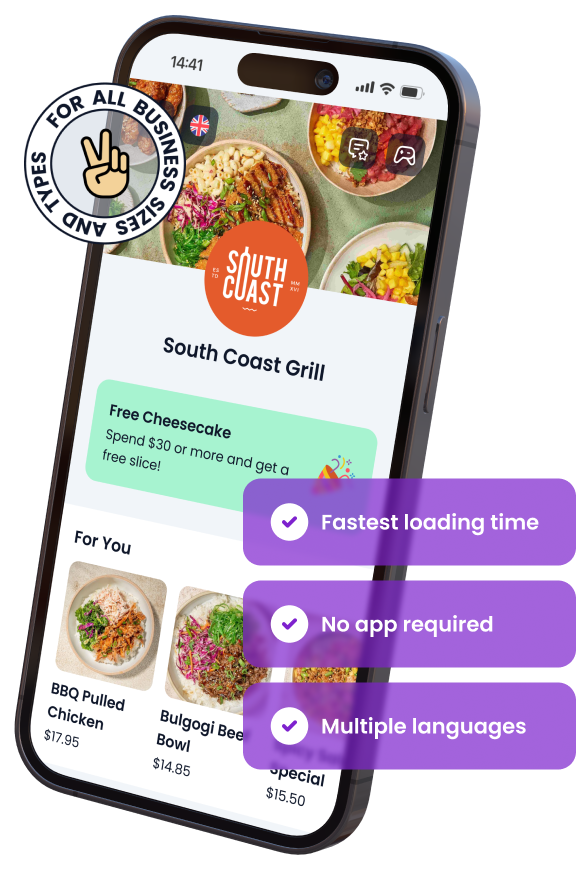
In This Article

Free AI Tools for Restaurants
TRY NOW ➜
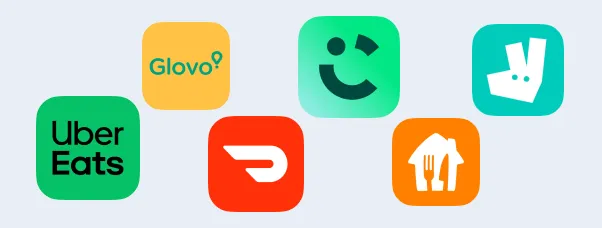
Add your food delivery app links
Make it easy for customers to find your restaurant by adding direct links to popular food delivery apps.


